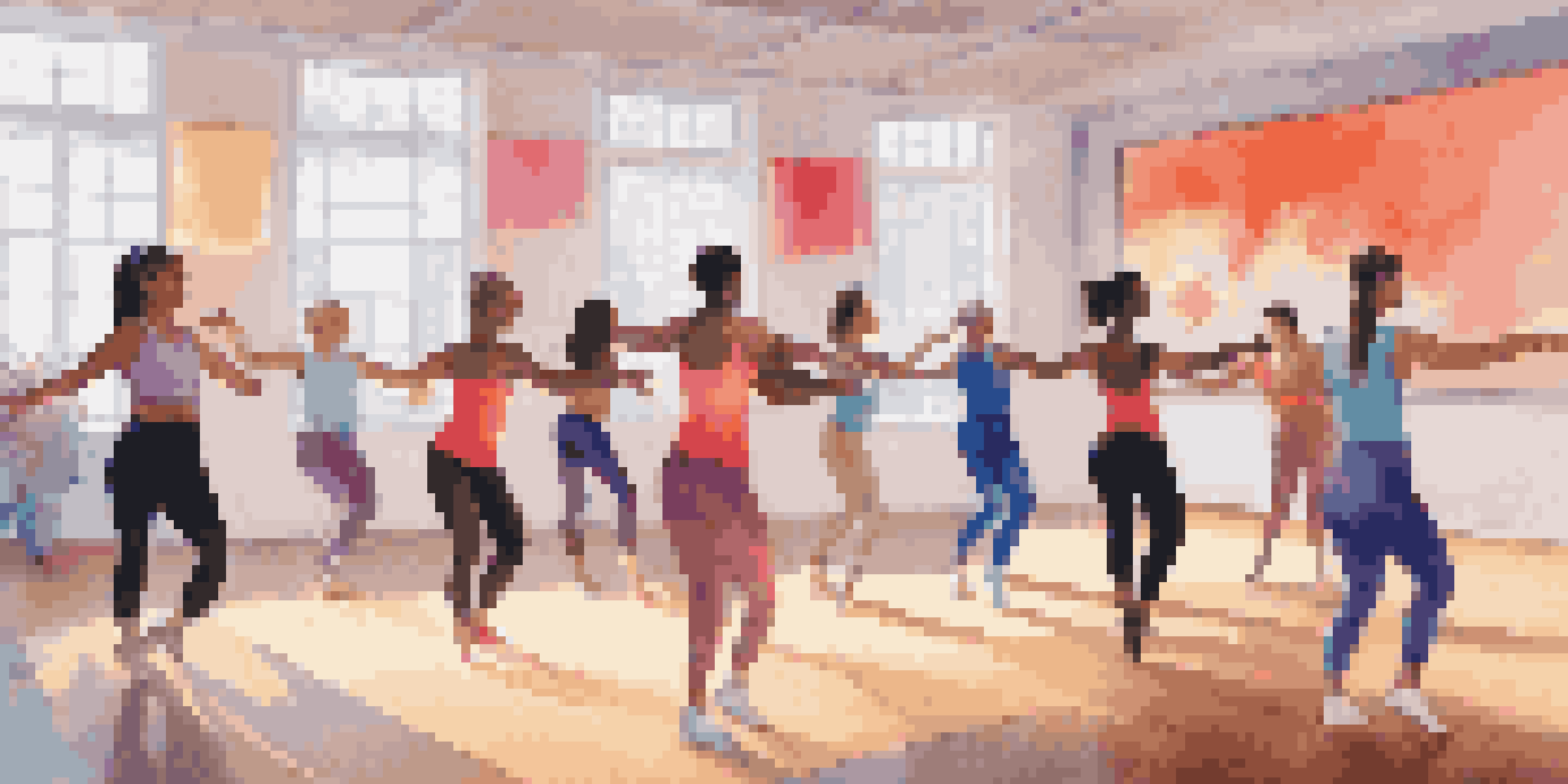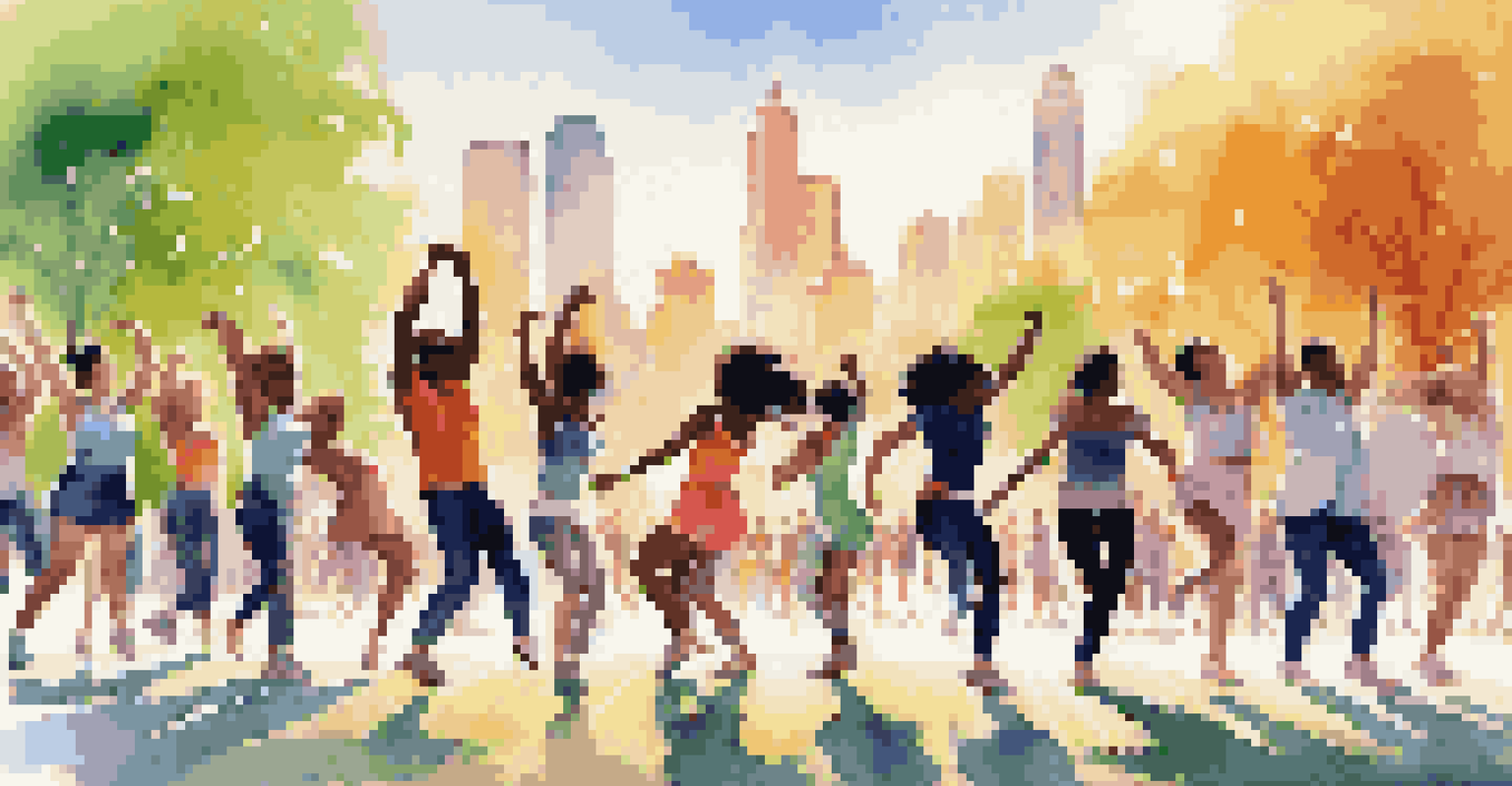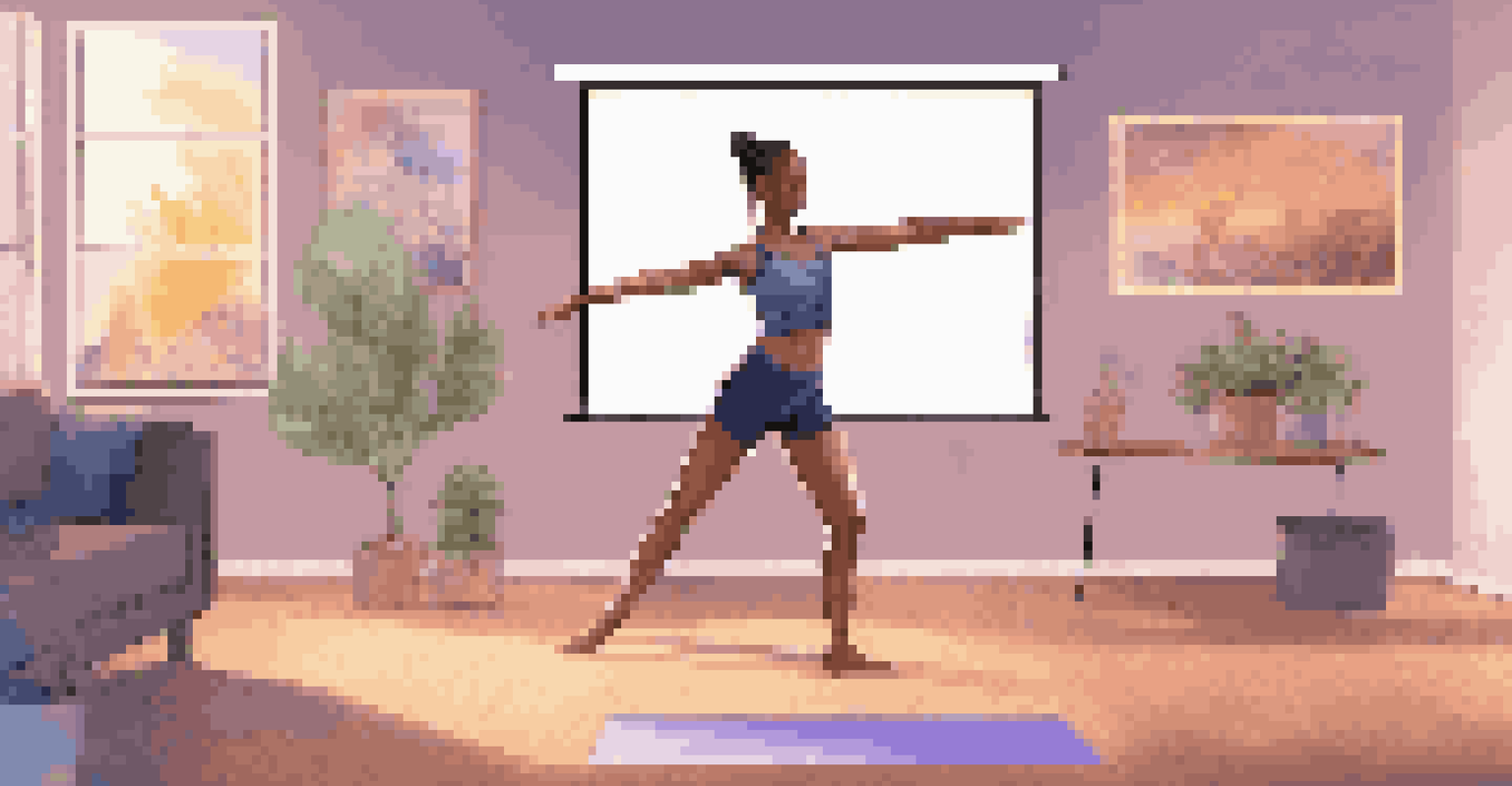The Evolution of Dance Instruction with Online Platforms

The Shift from Traditional to Online Dance Instruction
In the past, dance instruction primarily took place in physical studios, where students gathered to learn from experienced instructors. This model provided a personal touch, but it also limited access to many aspiring dancers due to geographical constraints. With the advent of online platforms, this dynamic began to shift, making dance education more accessible than ever before.
Dance is the hidden language of the soul.
Online platforms have democratized dance instruction, allowing anyone with an internet connection to join classes from world-renowned instructors. This shift has opened doors for individuals who may not have had access to local studios, empowering them to pursue their passion for dance. Additionally, dancers can now choose from a diverse range of styles and techniques, something that was often restricted in traditional settings.
As a result of this evolution, the way we think about dance instruction has changed dramatically. Students can learn at their own pace, revisit lessons, and even connect with a global community of fellow dancers. This newfound flexibility and accessibility have truly transformed the landscape of dance education.
The Rise of Dance Tutorials on Social Media
Social media platforms like Instagram and TikTok have become the new playground for dance enthusiasts. Short video tutorials and choreography challenges have taken the dance world by storm, allowing users to learn and share their moves with just a few taps. This has created a vibrant culture where dance instruction is no longer confined to formal classes; it's now part of everyday life.

These bite-sized tutorials offer a fun and engaging way for people of all ages to get involved with dance. With the ability to learn from their favorite influencers and choreographers, viewers can quickly pick up new styles and techniques. The instant feedback and community engagement fostered by social media platforms add another layer of motivation for aspiring dancers.
Online Dance Instruction Accessibility
Online platforms have made dance education accessible to anyone with an internet connection, overcoming geographical limitations.
Moreover, the viral nature of social media can lead to dance trends that sweep across the globe, uniting people in a shared experience. This phenomenon not only showcases the power of online platforms but also highlights how dance instruction is evolving to fit the digital age.
Interactive Learning: Live Classes and Feedback
One of the most exciting developments in online dance instruction is the availability of live classes. Platforms like Zoom and Vimeo have made it possible for instructors to interact with students in real-time, bridging the gap between in-person and online learning. This interactivity allows for immediate feedback, which is crucial for mastering complex dance moves.
The dance is a poem of which each movement is a word.
In live classes, students can ask questions and receive corrections on the spot, mimicking the traditional studio experience. This real-time interaction fosters a sense of community, as dancers can support each other and share their progress. As a result, students often feel more motivated and connected, even when learning from the comfort of their own homes.
Additionally, the option for recorded sessions means that students can revisit classes anytime, reinforcing their learning. This blend of live interaction and flexibility is reshaping the way we approach dance education, making it more adaptable to individual needs.
The Impact of Technology on Dance Technique
The integration of technology in dance instruction extends beyond just online classes; it also enhances the learning experience in various ways. Tools like video analysis and motion capture allow instructors to break down movements in detail, helping students understand the mechanics behind each step. This analytical approach can lead to significant improvements in technique and performance.
Moreover, apps and software designed for dance education provide personalized training programs that cater to individual skill levels and goals. These technological advancements make it easier for dancers to track their progress and identify areas for improvement. As a result, students can take ownership of their learning journey, setting them up for success.
Social Media's Role in Dance Learning
Social media has transformed dance instruction into a fun, engaging experience through short tutorials and viral challenges.
The combination of technology and dance instruction not only enhances learning but also encourages innovation in choreography. Dancers can experiment with new styles and techniques, pushing the boundaries of what is possible in dance.
Building a Global Dance Community Online
Online dance platforms have fostered a sense of global community that was previously unimaginable. Dancers from different countries and cultures can now connect, collaborate, and share their passion for dance. This interconnectedness enriches the learning experience, as students are exposed to diverse styles and perspectives.
Virtual dance showcases and competitions have emerged, allowing dancers to perform on a global stage without leaving their homes. These events not only highlight individual talent but also celebrate cultural diversity within the dance community. The ability to share experiences and support one another fosters a spirit of camaraderie that transcends geographical boundaries.
As more dancers and instructors engage with online platforms, the global dance community continues to grow and evolve. This sense of belonging encourages dancers to explore new styles and push their creative boundaries, ultimately enriching the world of dance.
Challenges of Online Dance Instruction
While online dance instruction offers numerous benefits, it also presents unique challenges. One significant hurdle is the lack of physical connection, which can make it difficult for instructors to provide accurate corrections. Without the ability to physically guide students, some nuances of dance technique may be lost, potentially hindering progress.
Additionally, the variety of online platforms can lead to information overload. With so many classes and tutorials available, students may feel overwhelmed when trying to choose the right fit for their learning style. This can sometimes result in a lack of focus, making it harder to achieve consistent growth in their dance journey.
Challenges of Virtual Dance Classes
Despite its benefits, online dance instruction faces challenges such as lack of physical connection and potential information overload.
Lastly, technical issues like poor internet connectivity can disrupt the flow of classes, leading to frustration for both students and instructors. As the online dance landscape continues to evolve, addressing these challenges will be crucial to ensuring a positive and effective learning experience.
The Future of Dance Instruction in a Digital World
Looking ahead, the future of dance instruction appears bright as online platforms continue to innovate. We can expect to see advancements in virtual reality (VR) and augmented reality (AR), which could further enhance the learning experience. Imagine being able to practice alongside a holographic instructor or receive real-time feedback through VR technology—this could revolutionize dance education.
Moreover, as technology continues to advance, dance instruction may become more personalized and tailored to individual needs. Artificial intelligence could analyze a dancer's movements and provide customized training programs, making learning even more efficient and effective. This level of personalization could be a game-changer for aspiring dancers everywhere.

Ultimately, the evolution of dance instruction through online platforms has already transformed the landscape, and the future promises even more exciting possibilities. As we embrace these changes, one thing is clear: dance will continue to bring people together, regardless of where they are in the world.